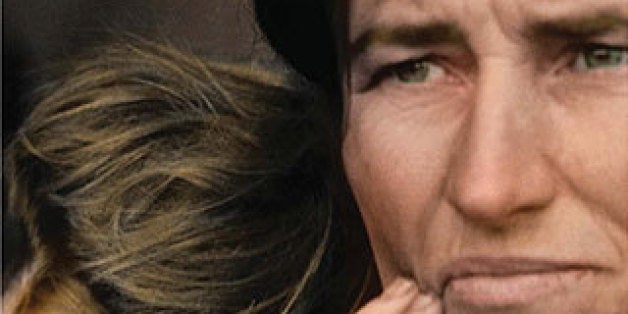
"What are you working on?" It's the most well-meaning and terrifying question an author is asked. For me, the process of writing is more like feeling my way through a darkened room than it is marching forward with clarity of intent. So, when trying to respond, I fumble around, sounding more directionless as I go: Oh, it's about brothers who live, um, in the desert, or, Oh, you know, just some stories about people and, you know, uh, relationships. I watch as expressions turn from genuine enthusiasm to something more like pity.
But I had a different experience writing my most recent novel, Mary Coin [Blue Rider Press, $16.00]. All I had to say was this: you know the photograph "Migrant Mother" by Dorothea Lange? And if that didn't work, I would add: the Depression photo of the woman holding the baby. Bingo. Expressions opened in an "aha" moment of recognition, smiles formed as the exact image came to mind.
Aside from taking some satisfaction in appearing as though I knew what I was doing with my time, which, in this case, was writing a fictional account of the people and events involved in the making of that photograph, I thought about why, eighty years on, the image endures in our collective consciousness. I have a come to believe that some of the reasons have to do with the secrets and mysteries embedded in the photograph.
What does her expression mean? Florence Owens Thompson, the woman in the picture, had been traveling up and down Central California for years when the photograph was taken. She had ten children. Her circumstances were so reduced that, as she told Dorothea Lange, her family had taken to eating frozen vegetables that fell off farm trucks and small birds. Her expression conveys exhaustion and resignation. But there is something in the set of her mouth, in the cast of her eyes, something in the way her children crowd so close to her that suggests resilience. Or does it? Does she really convey all that, or are we projecting onto her face a kind of idealization of survival? Thompson's expression is so enigmatic that it is impossible to know what she is thinking and feeling. And so we look again and again, searching her beautiful and complex face for an answer we will never get.
Why are the children turned away? Lange took six photographs in a very short time - about fifteen minutes, by her account. When she took her final picture, she asked the two smaller children (a third older girl was there that day, but was framed out) to stand on either side of their mother and turn away from the camera. Lange was a documentary photographer; her goal was to expose the actual circumstances of the migrant farmers. Her choice to position the children forces us to consider whether or not reality can be captured on film. When a camera is present, reality is altered. When a photographer chooses a composition, a focal length, and angle, an artistic intelligence is at play. The resulting image is a marriage between the real and the artificial. The question of why Lange posed the photograph compounds the mystery of the photograph, and it also asks us to consider if there is such a thing as photographic truth.
Mother Mary/Baby Jesus? Whether intentional or not, the composition of "Migrant Mother" calls to mind scores of paintings of Mary holding infant Jesus while chubby putti surround her. This is a formulation that is nearly Jungian in the way it is ingrained in our sub-conscious. In looking at the image, then, we have to question our reading of it. Are we seeing sacrifice and enduring love, selfless motherhood, and suffering because we are bringing to our appraisal associations of a completely different nature?
And finally, Who is the woman? Lange did not take the name of her subject - this was the rule of her government-funded work. The decision was made in part to protect the workers at a time when some farm owners were not hiring workers who dared to challenge their circumstances. But the choice has the collateral effect of making her subjects (and the subjects of all the other photographers engaged in this work) anonymous. They become simply "poor migrant farmers," a designation that, in effect, eradicates their identity, and in some ways makes them easier to look away from. When we look at "Migrant Mother" we are implicated in the ambiguous ethics of this choice. Do we want to know her? Do we want to engage deeply with her situation? And if we don't, who are we?
Marisa Silver is the author of five works of fiction, including the novel, The God of War and the story collection Alone with You. Her most recent novel, Mary Coin, was published in paperback earlier this month.